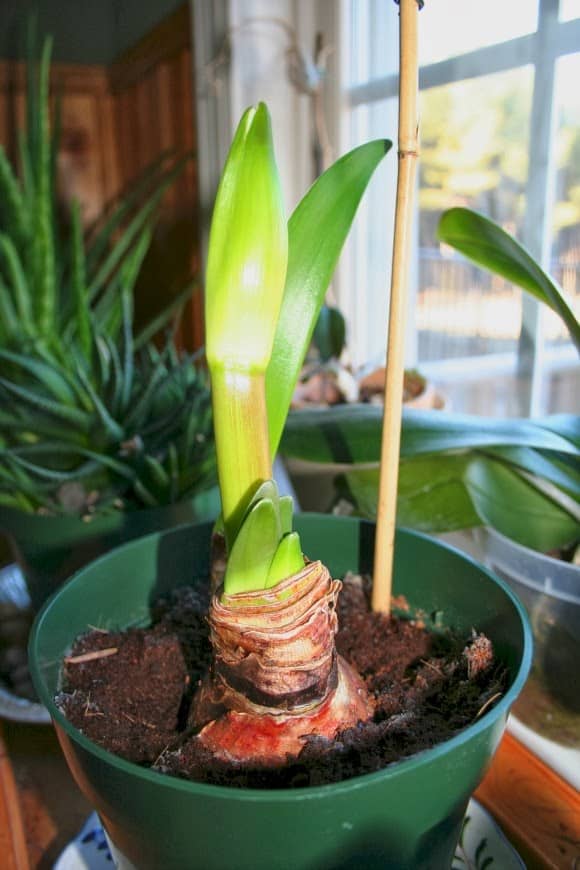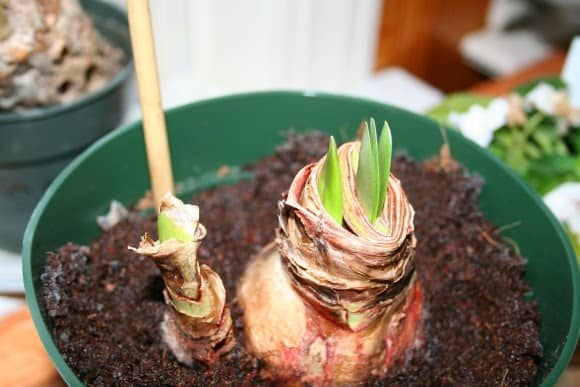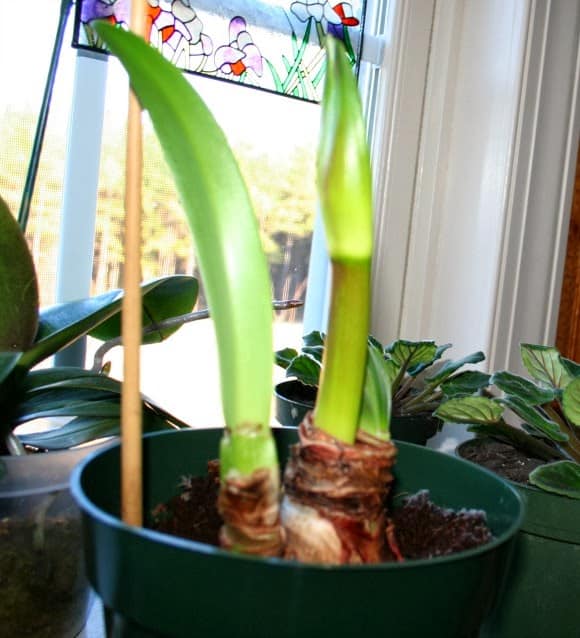There’s a bud on the amaryllis bulb as we start week 8! You can see the colors peeking through the thin green covering over the flower. Each day, the flower stalk and leaves seem to grow by several centimeters. Now the plant is really vigorous, turning towards the light, pushing up stalks.
Here’s the amaryllis bulb, week 8:
 |
| The amaryllis, week 8. The lighter green stalk is the flower bud. |
For comparison, here is what the amaryllis looked like one month ago:
 |
| December 9, 2013. One month ago. |
 |
| One month later, January 6, 2014. The amaryllis bulb is really taking off! |
The History of the Amaryllis Bulb




